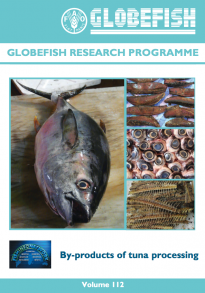Application of Appropriate Technology for Canning
Fish have been successfully canned commercially for more than 100 years. However, with the advent of improvements in freezing technology, transportation, marketing, and storage facilities, the percentage of canned fish products has been declining. One of the major advantages of canned fish is the relatively long shelf-life when stored at ambient temperatures. At the same time, canned fish is notably different from fresh and frozen fish. Canning requires subjecting fish to high temperatures to produce commercial sterility. The resulting product is fully cooked. Salmon, tuna, and herrings (including sardines and anchovies) are species of high commercial value that are traditionally canned.
By-product processing - Spain
By-product processing - Spain
Apart from the production of fishmeal and fish oil, it is difficult to extract other useful materials from the tuna wastes because they are already cooked. This is because cooking is the initial process in the production of canned tuna, the primary target of Spain’s tuna canneries. However, it is important to highlight that the European Regulation (EC) No 178/2002 established that fish or other sea animals, except sea mammals, caught in the open sea for the purpose of fishmeal and fish oil production and fresh by-products from fish from plants manufacturing fish products for human consumption, are Category 3 material, or low risk animal by-products. Therefore, the fishmeal and fish oil coming from this category can be used for animal feed. The high cost of the equipment and personnel to process the product inside the canneries makes it difficult to create by-products for human consumption as the material that comes out of the factories becomes Category 3 material. For this reason, the canneries attempt to maximize the quantity of product for human consumption that can be obtained by them and, as a result, the Spanish market has a large variety of tuna products.
By-products - Thailand
By-products - Thailand
Tuna canneries generate a significant volume of by-products and could benefit environmentally and economically by better utilization of these products. This industry produces a lot of waste water that must be treated prior to its release into the environment. There are also remnants of solid wastes such as head, bone, skin and viscera. The main products from these wastes are used as feedstock for the production of animal feed in the form of fishmeal and pet food products. Some are used to produce biogas and fertilizer. There are also many niche products that can provide a better commercial value such as tuna calcium, DHA oil, enzymes, peptone, protamine and hyaluronan. The liquid waste, such as blood and cooked water, can be used for human consumption and animal feed. For example, after separation and hydrolyzation, tuna cooking water can produce tuna essence or tuna flavour concentrate. The separated oil could be refined for use as a fish oil supplement or pharmaceutical grade fish oil.
Key Publications
By-products of tuna processing The tuna loin and canning industry generates a considerable amount of by-products. As the utilization of these by-products varies in different geographical regions, this publication explores utilization from Asia, Europe and Latin America. | |
Fish Processing Wastes as a Potential Source of Proteins, Amino Acids and Oils: A Critical Review This publication includes discussion of how fish processing wastes can be utilized as fish silage, fishmeal and fish sauce, as well as products such as proteins, amino acids, minerals, bioactive peptides, collagen and gelatin. | |
Fish Waste Management: Turning fish waste into healthy feed Overview of fish waste, product options with focus on fish silage. |
More Resources
More Resources
31 October 2023
05 September 2023














